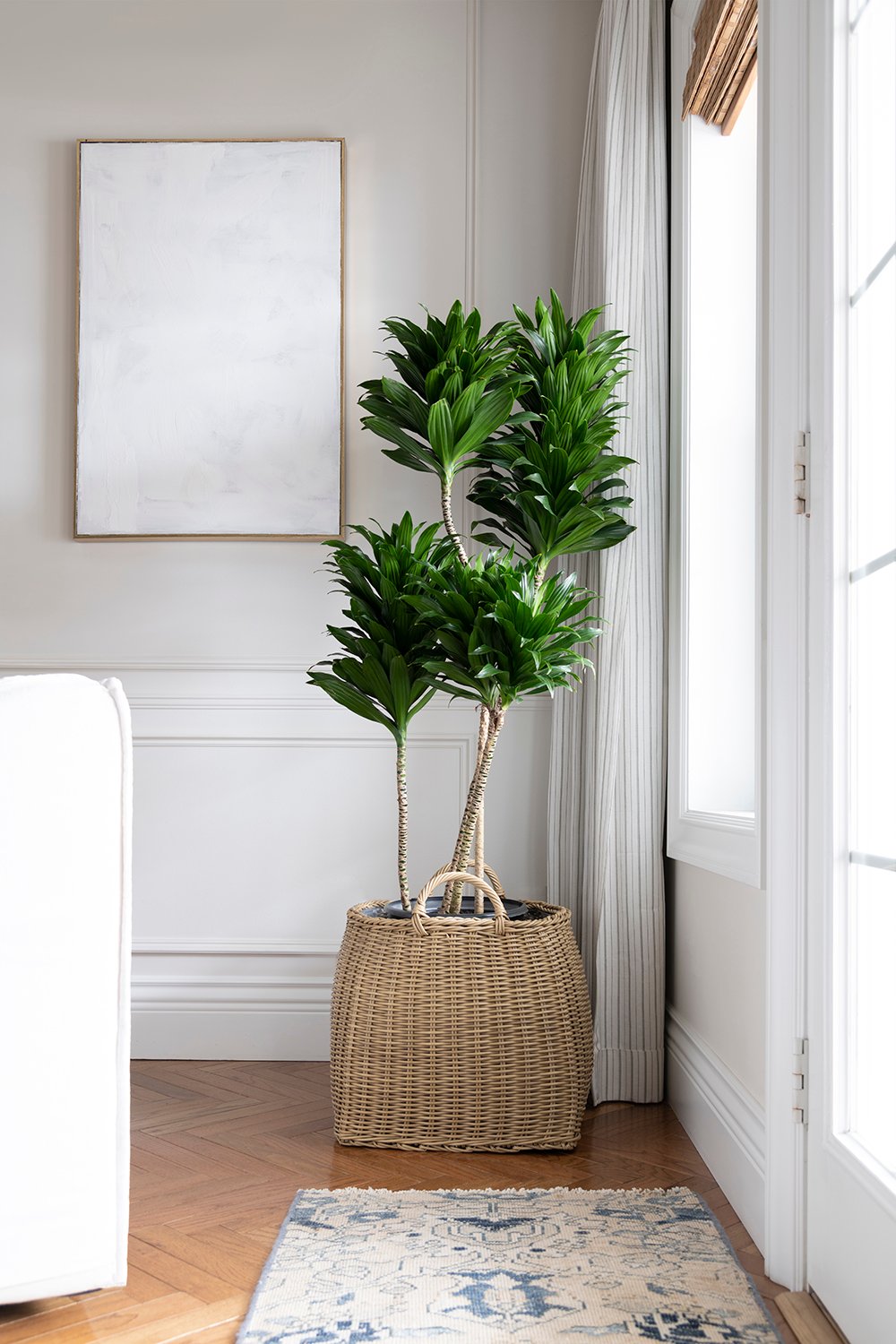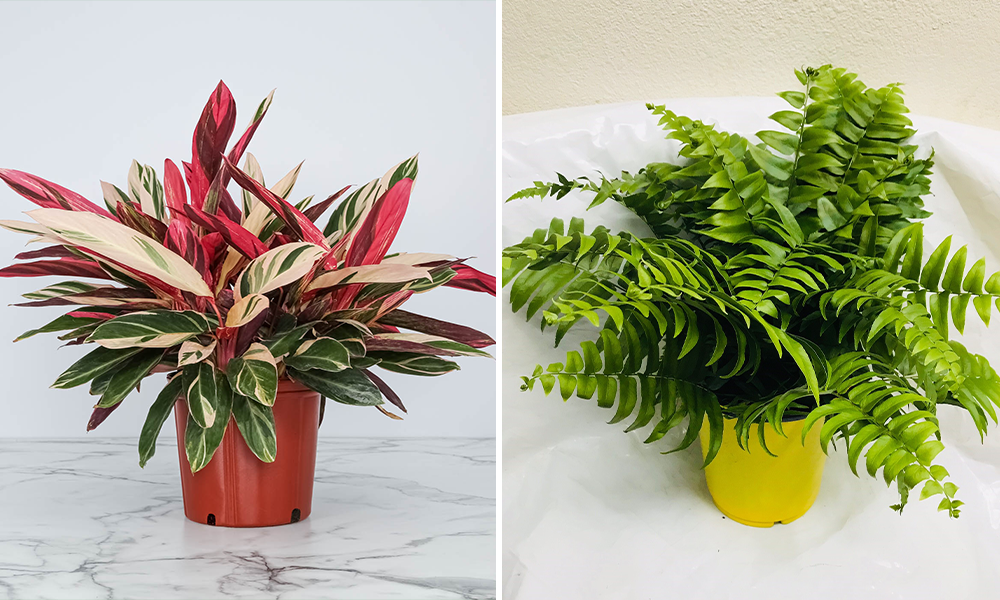The Best Low-Light Indoor Plants for Beginners and Busy Plant Owners
The Best Low-Light Indoor Plants for Beginners and Busy Plant Owners
Blog Article
Reveal the Keys of Low-Light Indoor Plants and How They Boost Your Atmosphere
Low-light interior plants have actually gathered increasing focus for their one-of-a-kind capacity to boost both visual appeal and ecological high quality within workplaces and homes. These resistant varieties, consisting of the Snake Plant and Tranquility Lily, not only thrive in difficult lights problems yet likewise play a critical function in air filtration and emotional health.
Advantages of Low-Light Indoor Plants
Although many individuals assume that interior plants require bountiful sunlight to prosper, low-light indoor plants offer a wide range of benefits that make them suitable for various environments. Among the primary benefits is their versatility; they can grow in rooms with restricted natural light, such as offices, cellars, or rooms with little windows. This attribute allows individuals to boost their surroundings with plant, adding to boosted aesthetic appeals without the requirement for extensive illumination alterations.
Furthermore, low-light interior plants can dramatically enhance interior air quality by filtering system damaging toxins and launching oxygen, making living spaces healthier. Research study has actually shown that particular selections can soak up toxins, therefore promoting a cleaner atmosphere. In addition, they can improve mental health by minimizing stress and raising performance. The existence of plants has been connected to better sensations of serenity and focus.
In addition, low-light plants frequently need less maintenance than their sun-loving counterparts, making them ideal for busy people or those new to horticulture. Their resilience enables them to love minimal treatment, therefore providing a fulfilling experience for plant lovers and novices alike. In recap, low-light interior plants offer both useful and aesthetic objectives, making them valuable additions to any type of area.
Leading Low-Light Plant Varieties
Low-light indoor plants can be found in a variety of varieties, each offering distinct features and benefits fit for dim settings. Amongst the most preferred ranges is the Snake Plant (Sansevieria), known for its architectural leaves and air-purifying capacities. This resistant plant flourishes on neglect and can tolerate a variety of light problems.
Another excellent option is the ZZ Plant (Zamioculcas zamiifolia), which features glossy, dark environment-friendly fallen leaves and is highly drought-tolerant. Its versatility makes it a favored for offices and homes with minimal sunshine.
The Pothos (Epipremnum aureum) is likewise a top competitor, with its trailing vines and heart-shaped fallen leaves - Best low-light indoor plants. This versatile plant can be educated to climb or waterfall, including aesthetic passion to any space

Care Tips for Low-Light Plants
Looking after low-light interior plants calls for a nuanced understanding of their details needs to make certain optimal growth and vigor. First, it is vital to pick the best potting mix, as a well-draining soil is important to avoid root rot. A mix made for houseplants, typically consisting of peat moss and perlite, functions well for many low-light ranges.
Watering is another key facet of treatment. Low-light plants normally require less frequent watering contrasted to their sun-loving counterparts.
Fertilizing ought to be come close to with caution. Throughout the growing season, a diluted fluid fertilizer can be used monthly, yet in winter months, lots of low-light plants enter dormancy and require little to no fertilizing.
Finally, it is essential to regularly clean the fallen leaves to remove dirt, enabling much better light absorption. By adhering to these care tips, you Your Domain Name can cultivate a growing atmosphere for your low-light indoor plants, boosting both their appearance and long life.
Enhancing Air Quality With Plants
Indoor plants play a considerable duty in improving air quality within homes and office. With the procedure of photosynthesis, these plants take in carbon dioxide and release oxygen, adding to a healthier atmosphere. Furthermore, certain low-light interior plants possess the capability to filter hazardous toxins, such as benzene, trichloroethylene, and formaldehyde, which are commonly found in interior environments.

In addition, the visibility of interior plants can raise humidity levels, which helps reduce completely dry skin and respiratory system issues, additionally enhancing overall wellness. This capability to improve air high quality not just promotes physical wellness however likewise supports mental health.
Integrating low-light indoor plants right into your living and functioning rooms can bring about an extra invigorating and vibrant setting (Best low-light indoor plants). Spending in these all-natural air purifiers is a simple yet effective strategy for boosting interior air high quality and fostering a much healthier way of life
Creating a Calm Indoor Area
The assimilation of plants into living areas not only improves air high quality however also adds to a serene ambience. Low-light indoor plants, such as serpent plants and pothos, are particularly effective in creating a peaceful environment, as they thrive in problems that might or else be inhospitable for other greenery. Their lush vegetation supplies a relaxing visual, decreasing anxiety and advertising leisure.
Integrating these plants into your office or home can evoke a feeling of tranquility and health. Strategically putting them in locations where you invest considerable time, such as living offices or areas, enables for an immersive experience click here for more with nature, which has been shown to enhance mood and cognitive function.
Moreover, the gentle activity of check my source fallen leaves in reaction to airflow can produce a dynamic aesthetic aspect that improves the general ambiance. Take into consideration making use of a range of plant elevations and appearances to add depth and interest to your room. With thoughtful positioning and care, low-light indoor plants can change any type of location into a calm shelter, promoting not only aesthetic fulfillment but also emotional and mental wellness.

Verdict
Including low-light indoor plants into different atmospheres returns significant advantages, consisting of enhanced air high quality and enhanced aesthetic appeal. These hardy types not just thrive in minimal light yet likewise add to a relaxing ambience, advertising mental and emotional health. By picking proper varieties and implementing correct care strategies, people can efficiently cultivate a serene indoor area that fosters well-being and performance. The transformative power of low-light plants emphasizes their value in boosting both occupational and property setups.
Although lots of people think that interior plants call for bountiful sunlight to prosper, low-light interior plants provide a wide range of advantages that make them perfect for various atmospheres.Furthermore, low-light indoor plants can considerably improve indoor air top quality by filtering damaging contaminants and launching oxygen, making living rooms healthier. Furthermore, certain low-light indoor plants possess the ability to filter hazardous contaminants, such as benzene, formaldehyde, and trichloroethylene, which are frequently found in interior environments.
Low-light indoor plants, such as serpent plants and pothos, are particularly efficient in producing a tranquil atmosphere, as they prosper in problems that might otherwise be inhospitable for various other plant.Integrating low-light indoor plants into numerous settings returns substantial benefits, consisting of enhanced air top quality and improved aesthetic appeal.
Report this page